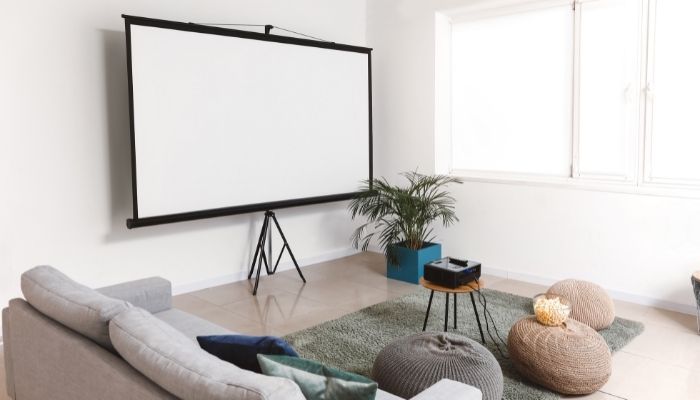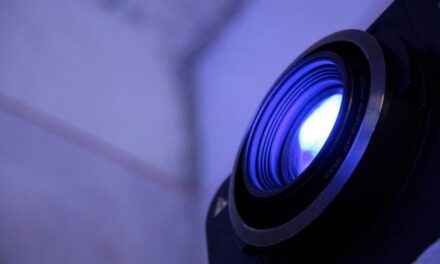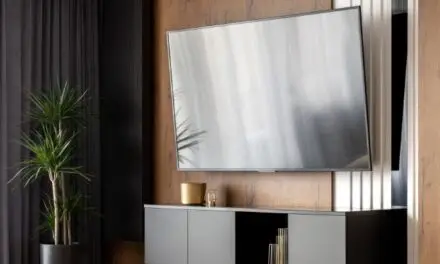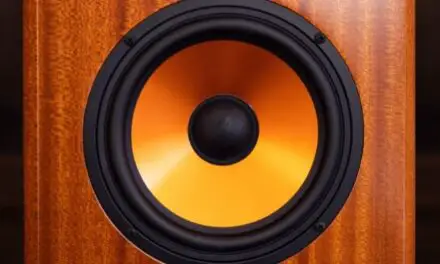There are a lot of reasons for wanting to use a projector outside, during the day.
Wedding receptions, family movies, pool parties, birthday parties, are all great venues for breaking out the projector.
However, can daylight ruin the whole experience?
Table of Contents
Can A Projector Work In Daylight?

A projector can work in the daylight depending on how many lumens it puts out, how bright the day is—in terms of weather—and what kind of screen you’re using.
In broad daylight, it will be difficult, regardless of the type of projector you’re using.
The brighter the lumens the better.
If you want a worthy outdoor projector, you’re not going to be able to use one of those small, portable versions that attach to your phone or a cheap one with a low lumen output.
To outshine the sun, you really have to shine.
If there’s too much daylight for your projector to compete with, you may not be able to get a decent picture, but if there’s only a moderate amount of brightness, you’ll want at least a 6,000 lumens projector (more, if possible), in combination with a dark grey or black screen to absorb all of that additional light.
What’s The Best Way To Set Up Outdoor Projectors?
The most important factor is to set the projector up so that the lens never faces the sun dead-on.
If you can work it out, you never want to let the sunshine directly on your screen either.
If you have trees, an overhang, or even a large gazebo, try to set it up in the shade if you can get away with it.
Audio is every bit as important as video, so you’ll also want to make it central to whatever you have going on.
If it’s a cloudy day, so much the better but either way, you’ll want to go with a gray screen rather than a white screen or a black screen.
The black screen will absorb too much light and your projector won’t be able to make up for it in the brightness of the day.
The white screens will reflect too much light, washing out the picture.
The gray screens will get you closest to an ideal picture in the daylight.
How To Choose The Best Screen For Daytime Use
The color of the screen you choose will play a big part in determining the picture quality you’ll get when projecting in daylight.
Depending on the level of brightness you’re dealing with, some shade of dark gray or black will offer the best picture quality.
Grey and black projector screens are often referred to as high contrast because they help to boost the contrast from projectors when there are higher levels of ambient light in the environment.
Darker screens (especially black ones) absorb ambient light much more than white screens and that can help to overcome image “washout” caused by daytime brightness.
The best projector screen for daytime brightness is going to be an ambient light rejecting black colored screen.
This type of screen will do the best job of countering all of that additional brightness and present you with the clearest image.
But this type of screen is only going to be effective in environments where there is a lot of bright ambient light for your projector to have to compete against.
If you were to bring a black screen indoors, dim the lights and use the same projector to project onto it, the image would appear far too dark, almost like a black and white movie.
For a dark indoor setting, a white screen would provide a much better quality image.
You Might Also Like: Will A Projector Work On A Colored Wall? (All You Need To Know)
The Best Projectors For Outdoor Use
First, we need to look at how many lumens we’re talking about before getting into the best projectors for outdoor use.
- 3,000 lumens for 9’ x 5’ to 12’ x 8’ screens.
- Up to 20’ x 10’, you’ll want 7,500 to 8,000 lumens.
- 10,000 lumens for anything between 20’ x 10’ to 40’ x 20’.
- For anything above 40’ x 20’ a minimum of 12,000 lumens.
As you can see, lumens are quite important in the daytime, and in order to have a decent amount of visibility, you’re really going to have to crank up the lumen output.
The sun alone is roughly 133,000 lumens per meter².
That’s a lot of competition and you’ll need something that you don’t have to sit right up against a screen to view.
XNoogo Native 1080p Projector
This thing cranks out 9,500 lumens with 5G and WiFi connectivity.
You can get pretty close to displaying this on a 20’ x 10’ screen so long as the screen and the projector aren’t directly exposed to the sun.
Since it also comes with Bluetooth, you can pair your Android or iOS device with it and stream movies or videos directly from your phone.
It also doesn’t come with an exorbitant price tag at just $259.99.
Jifar 5G WiFi Bluetooth Projector
This one comes with 9,500 lumens, has all of the bells and whistles of the XNoogo, and plays in 4k resolution.
Bluetooth allows you to sync your phone up for all your downloaded videos or movie streaming pleasure.
Even better, it comes with a lower price tag than the XNoogo, at $249.99.
It’s also a well-reviewed projector, which goes to show that you don’t have to pay hundreds of dollars more just for a name.
DBPower L21 LCD Video Projector
Not quite as powerful as the Jifar and XNoogo, the DBPower L21 is still a nice projector, with 5,000 lumens and 1080p resolution, it supports just about any device you can imagine hooking up to it.
It also benefits from an excellent speaker system so you won’t have to drag out the externals just to hear what’s going on.
This is a perfect projector for a 12’ x 8’ screen and it won’t sink your wallet at $86.34.
Final Thoughts
You’ll need the brightest lumens you can get your hands on, a decent speaker system, and a quality giant screen – like the Yard Master 2 Series by Elite Screens – to get the most out of your projector when it’s exposed to daylight.
Follow those general rules and you’ll have a good, daytime, pool-party projector, and an outstanding nighttime projector.



